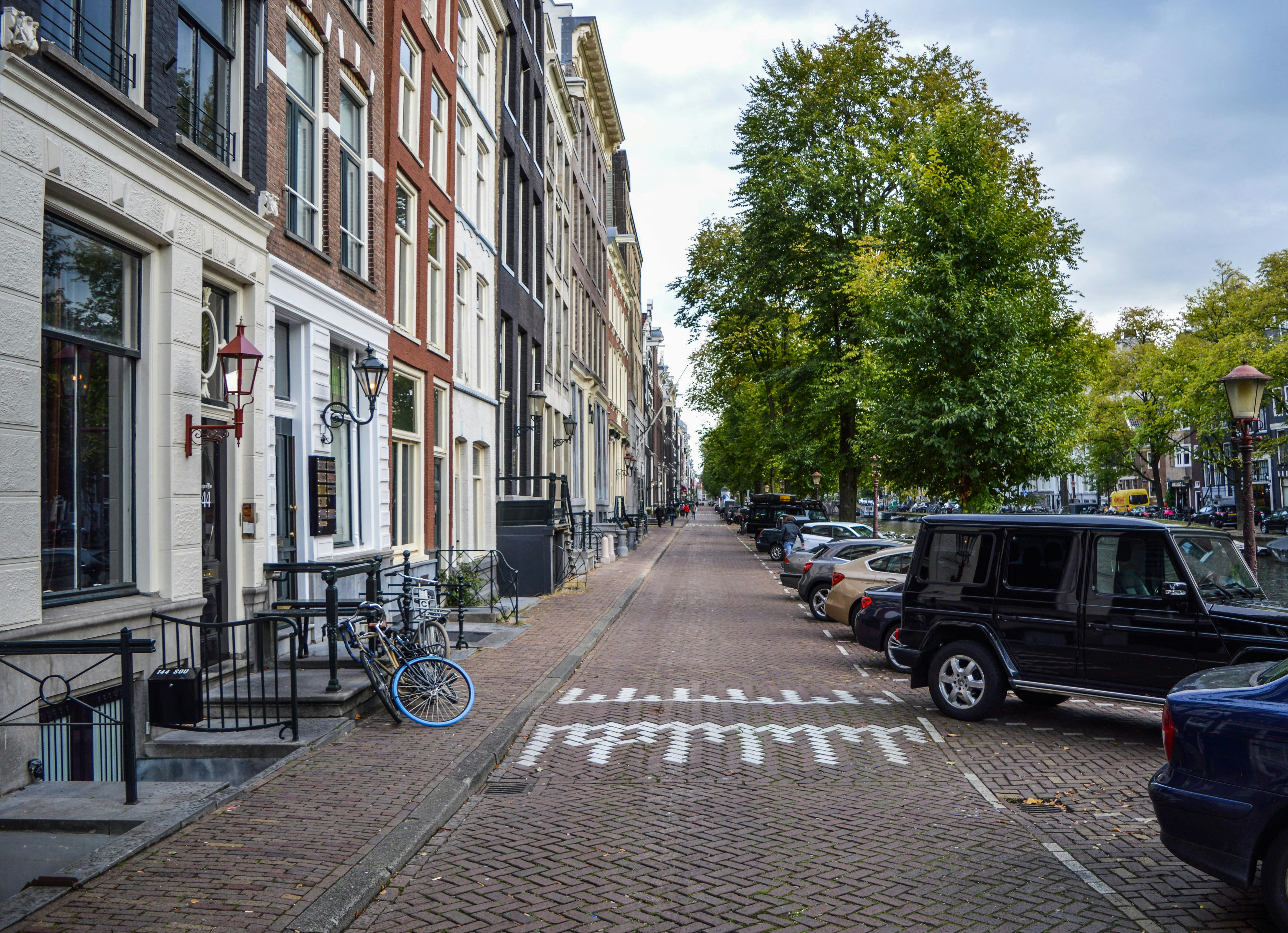It seems to come from everywhere
Outside noises can come from all kinds of directions at the same time and can have many sources. They can also be reflected everywhere. People tend to look at what they think is the source and imagine sound traveling in a straight line from the source to their garden. In reality, the sounds may have been deflected, bouncing off buildings and other objects, arriving in your yard amplified and from a different direction than the source. The amplification that occurs is not unlike the amplification of sound that occurs when a murmur is channeled through a wind instrument and emerges out the other end like a trumpet blast. So your first step is to identify the source of the problem and the path you are taking to get to your yard.
Words and regulations are excellent soundproofing
A nearby business or industry may be exceeding acceptable noise levels or duration or operating at inappropriate times of day. Sometimes you can solve the problem simply by raising it with the landlord in a friendly manner. It may even be worth checking with your local council and making sure your noisy neighbors aren’t breaking local laws. People are often surprised to learn that there are many laws that protect residential amenities (as long as the noise is not from aviation, which seems to be a law in itself in many countries). I have seen laws that restrict the use of air conditioners after a certain time, ban leaf blowers, and even outlaw pets like roosters and barking dogs.
Having exhausted common-sense logical approaches to noise reduction, you have two options to solve the problem. The first option is to create some kind of acoustic barrier in the patio. The second option is to go back inside and work on your internal soundproofing.
An airtight yard!
It is impossible to make an airtight patio. You will always have to deal with the sound of the flanks. Lateral sound is noise that surrounds, under or around soundproofing structures. All the principles of internal sound barriers and sound absorption still apply outdoors.
Low frequency noise has a longer wavelength than high frequency noise and will require a higher and denser barrier. If, for example, you’re dealing with noise from a truck, you probably need a barrier up to 12 to 15 feet (3.5 to 4.5 meters) or more. In most cases this is not practical or even against municipal building regulations, so it may be advisable to go back inside and work on your soundproofing there and be content with a quiet indoor environment.
Is it a baritone or a soprano annoyance?
It is true that higher frequency noise can be blocked by lower fences, but there are some complications. Take the noise of train bells at level crossings as an example. This is quite a high frequency. Hopefully a lower fence will block noise. Unfortunately, train companies have installed their bells on top of ten-foot poles, which means you still have to install a 15-foot fence to have an acceptable impact on noise. In an ideal situation, you want to build the fence at least eight feet higher than the source of the noise. This is less of a challenge when it comes to ground-hugging car exhaust pipes, but it is a challenge when it comes to truck horns and their roof-mounted exhaust systems or even their noisy engines that are quite high off the ground.
The path of the lotus flower
All is not lost when structural soundproofing seems out of the question. There are still a couple of innovative options. It can soundproof by creating more sound, especially a sound that is pleasant to the ear. For example, one way to quickly deal with train bells at level crossings is to install a water feature in your garden; not to be confused with the silent Zen-style installation. The sound of falling water will not only create a pleasant atmosphere, but will also interfere with the sound of bells crossing trains and make them less noticeable. You can achieve a similar effect with wind chimes. Chimes are not as effective because they only work when the wind is blowing and the sound tends to be less random. The motivated soundproofing enthusiast could consider bells and a water feature and also external audio speakers to stream pleasant music into the garden. The application of these three strategies will sufficiently interfere with the most annoying noise pollution and allow you to return to your garden for recreation, relaxation and entertainment. Another advantage of these noise masking options is that they are usually much less expensive and much more homemade than a huge fence.
Acoustics by name only
If you are going to build a proper noise barrier in your garden, make sure it is the right height and that there are no openings or gaps anywhere. Correct height and no gaps are the two most important variables and the things most people get wrong. Some DIY items seem to promote building acoustic fences at any height, which is frankly a waste of time and effort. A fence won’t work just because it has the word “acoustics” in its name! There are some proprietary acoustic fence systems on the market and even with these systems it is important that you check the height required for your specific problem. Most reputable products come with data sheets.
The data sheet is king
The data sheets should talk about how much the fencing system reduces noise. The quantity is measured in decibels or dB. You should look for a system that reduces noise by at least 20dB. As a general rule of thumb, every 10dB is a halving of perceived noise. Some products come with an STC rating. Again, don’t consider a product rated lower than STC 20. STC is a more useful summary of how a product performs across a range of sound frequencies. See if you can get the frequency table for the product. Two products can perform quite differently depending on the noise source and the product’s frequency response. If your noise problem is low frequency like trucks and “doof doof” music, then you need a product that blocks more noise at lower frequencies, say between 50Hz and about 500Hz. So I would look for higher values vs. at these frequencies on the STC graph. If your noise problem is of a higher frequency, such as the human voice, small dog barking, or train level crossing bells, then you will need better blocking at frequencies from around 1000 Hz to around 2500 Hz. Hz. I would look for better performance at these higher frequencies.
those fences are big
An effective and relatively light weight material for acoustical fencing is sheet steel, such as the material used in deck ceilings. Wooden fences work well, but it is more difficult to create an airtight structure, and the wood will be heavier and more difficult to work with. Whatever you wear, remember that the structure is taller than usual and will catch the wind. Make sure your studs are closer together or thicker than normal and bury them deeper into the ground as well.
If you already have a tall fence, it likely has holes or gaps in and around it, it may not be made of the right material to block or absorb offending sound. In situations like this, you may want to consider adapting a product like mass-loaded vinyl (MLV). This is a heavy plastic membrane that is basically weather resistant. You can attach it to your existing fence and it will greatly increase the density of the fence and help block out noise. MLV does not change the fact that you still need the correct height of the fence.
If you live on a large property and can build a mound of dirt to deal with the problem, this can be an effective and inexpensive way to create a soundproofing barrier. Again, the height has to be just right and it can take a bit of effort to build a mound of dirt. Another option for large estates is a hay bale fence. There is a ton of information on the internet these days about hay bale construction and they are cheap, effective and quick, but they must be free of gaps and of the proper height.
be careful who you listen to
Like all soundproofing issues, there are endless myths about exterior soundproofing. The most common is the use of trees and shrubs. Trees and bushes are quite ineffective except as visual screens. To some extent, the sounds of the birds and the wind through the leaves create a masking sound like the water fountain and bells we talked about earlier.
Remember that prevention is better than cure. If you haven’t bought your home and are thinking about buying a nice piece of property that’s a bit close to trains, the airport, or the highway, think again. If you’re a bit sensitive to noise, don’t put yourself through the nightmare of trying to deal with noise problems for the rest of your days. Quality of life is more important than negotiating real estate. Save a few cents more and buy with peace of mind. Don’t be lulled into a false sense of security about what constitutes acceptable silence. Set your own standards and stick to them. Many real estate developments are noisy torture chambers, and yet the brochures feature images of blissfully happy people living the lives of their dreams. Not everyone minds noise, but if you do, you should look past the hype and ask if there’s a 3am freight train. your yard and so on.




